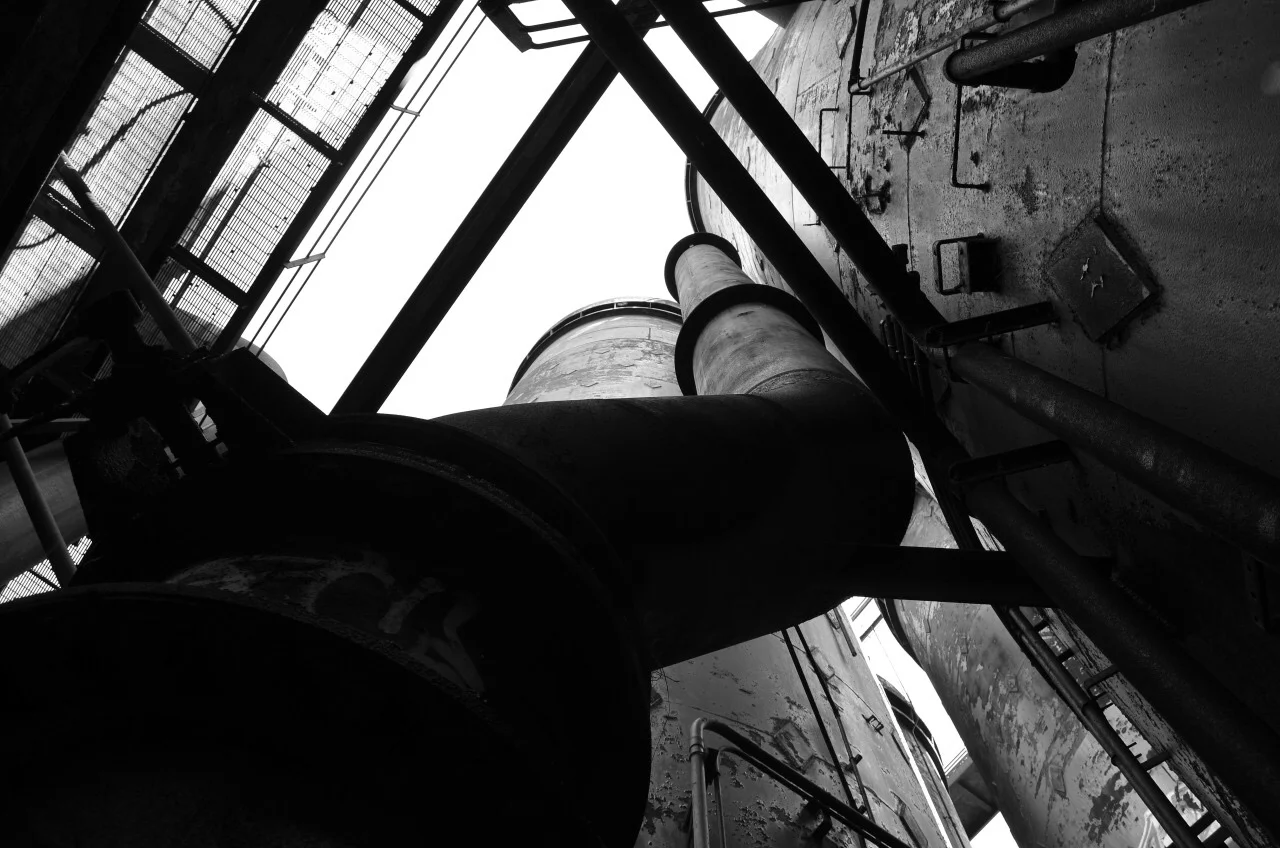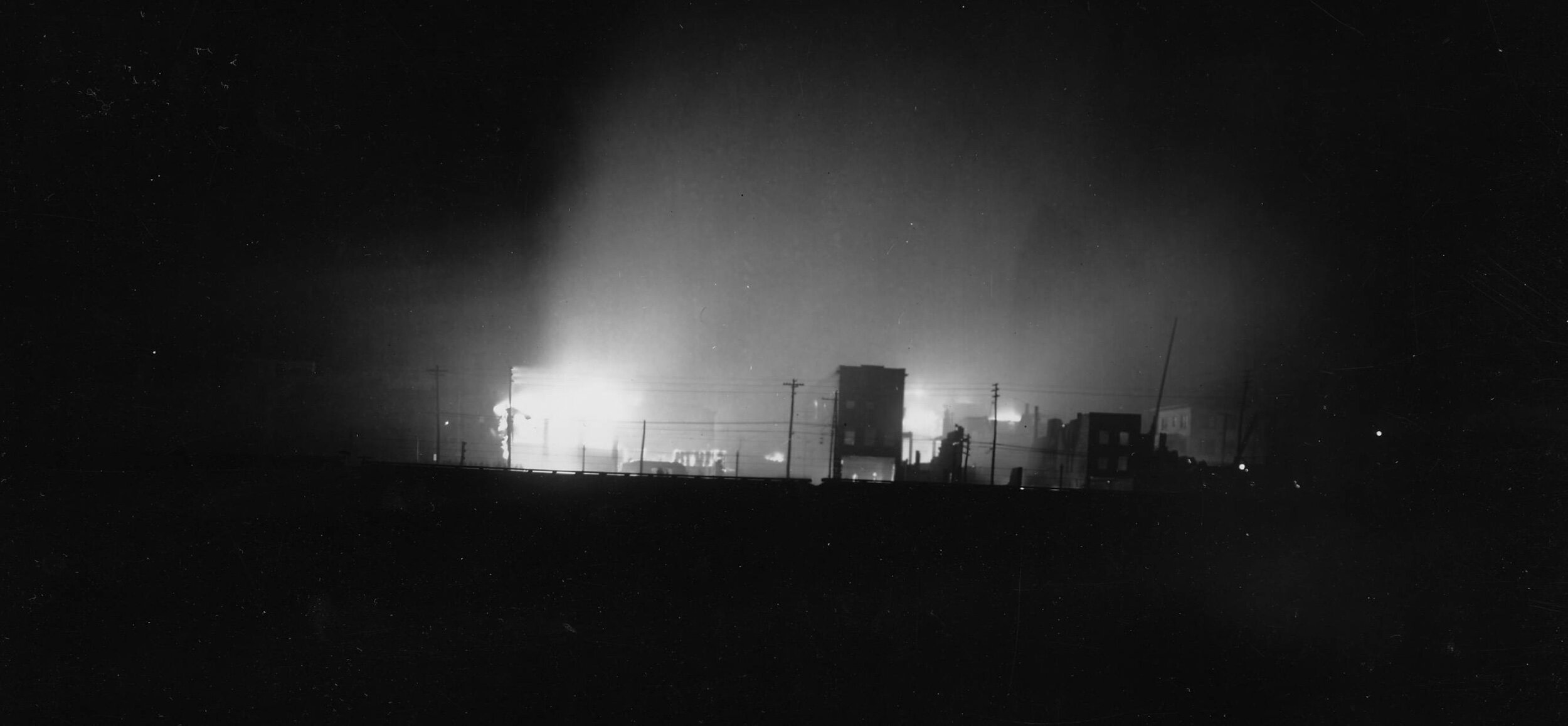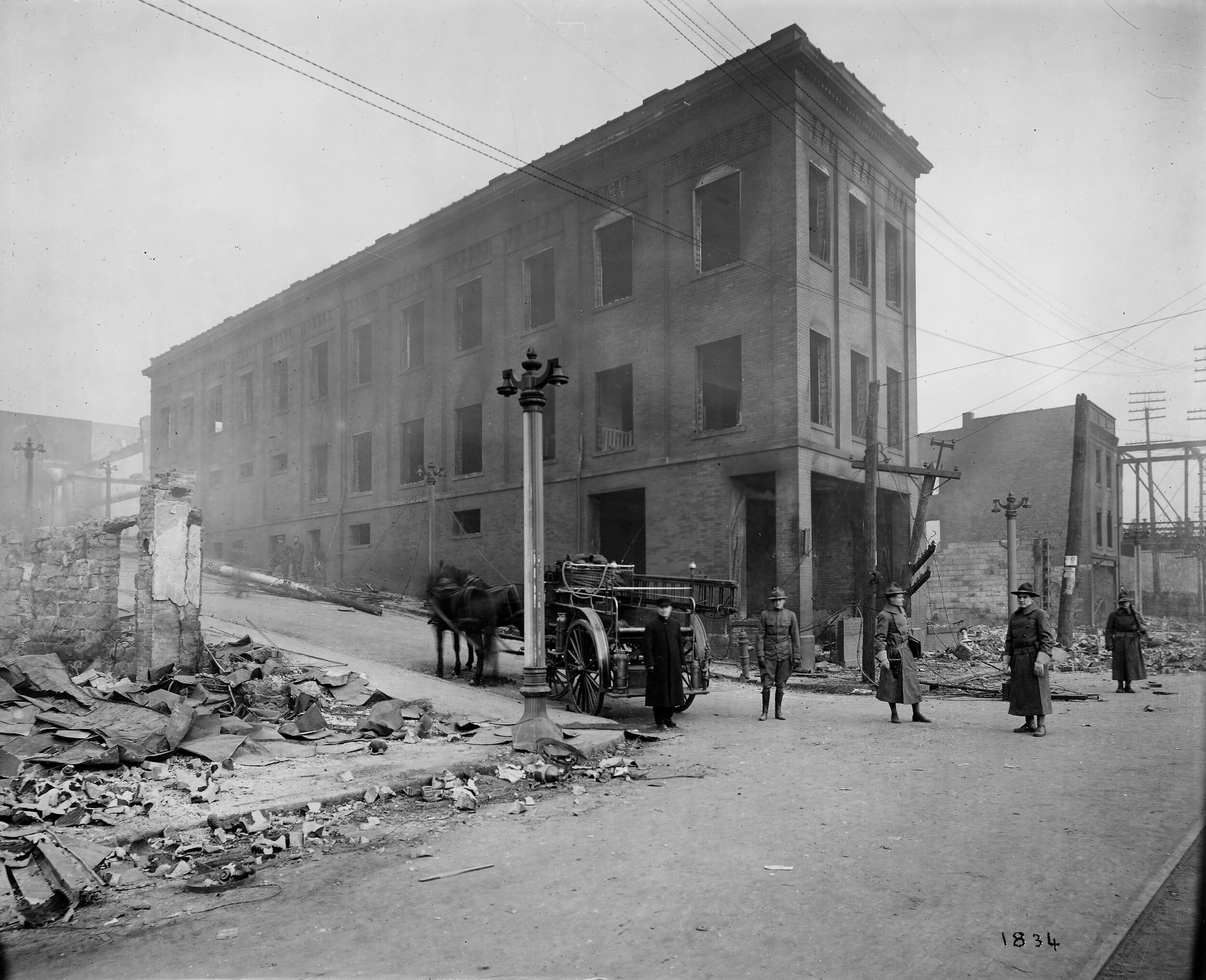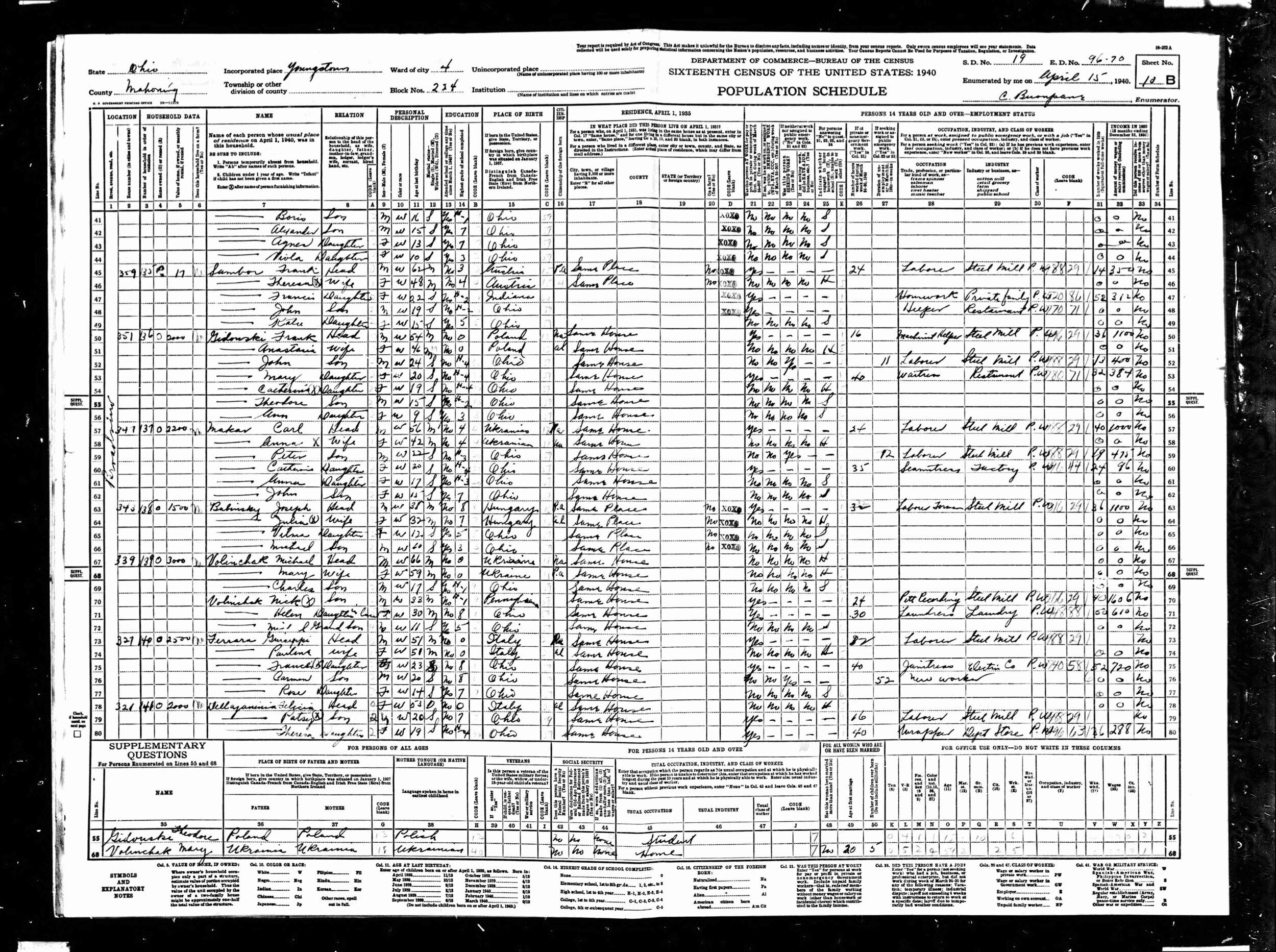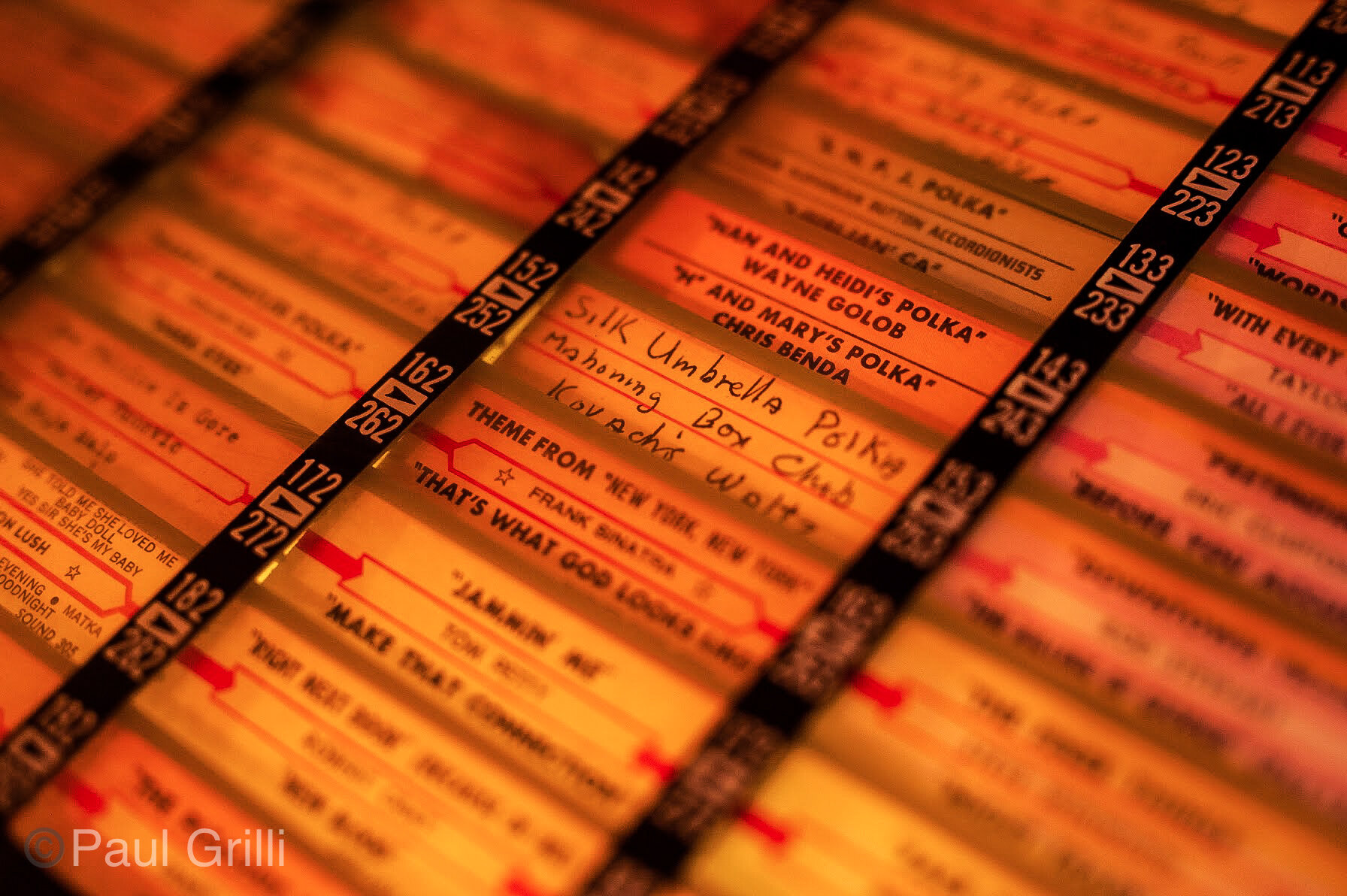Campbell, O. On today’s date in 1916, the strike against the Youngstown Sheet & Tube Co. that began 20 days earlier came to a head. East Youngstown, as Campbell was then known, saw it’s business district along Wilson Avenue burned to the ground.
Youngstown Vindicator
The image below shows Wilson Ave lit by flames and engulfed in smoke. I’d assume this was taken from Sheet & Tube property; outside of the strike the vantage point could be reversed and the mill would look like this.
Courtesy Ohio memory collection
The labor force at the Youngstown Sheet & Tube mill had gone out on strike due to a 9% wage cut while the company was flush with war work. A description of East Youngstown (Campbell) from Men & Steel: “ In East Youngstown life is scraped down to the bone: there are the mills, there are the workers-and formerly there were the saloons. There is nothing else. Here are no fine houses, only the steel workers' dwellings. Most of them are ugly frame buildings, climbing muddy streets.
In East Youngstown you realize that men are here not to live but to tend the mills. Humanity is dwarfed; the machines which make the industry are exalted. In East Youngstown is nothing but steel; there is a pillar of cloud by day and there is a saffron glare in the sky by night that forever reminds you of this...”
Youngstown Vindicator
Some accounts say that J.M. Woltz., safety supervisor of YS&T - also named police chief of East Youngstown, fires the first shot as a “warning”. Three dead as a result. He was also called to testify before Congress for sending spies into the mills and labor meetings ahead of the deadly 1937 steel strike.
A wage increase resulted from this strike, as well as the construction of the Youngstown Sheet and Tube Company homes and the renaming of East Youngstown to Campbell after James Campbell - president of the Youngstown Sheet & Tube Co.
Images of the aftermath below.
Courtesy Ohio Memory Collection
Courtesy Ohio Memory Collection
Courtesy Ohio Memory Collection

